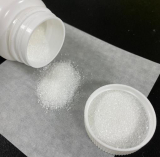- Category :
Laboratory Chemicals
- CAS NO :
- EC NO :
- Molecular Formula :
- Main Specifications :
- Synonyms :
Product description:
Blood analysis is a very important and powerful diagnostic tool in animal health and welfare control. It is usually performed in higher vertebrates, and its reference value has been established, but fish hematology still needs further research. Many internal and environmental factors have a profound impact on the hematology value of fish, making it difficult to determine the reference value. In addition, due to the short clotting time, fish blood usually requires the addition of anticoagulants. The choice of anticoagulant is essential to obtain reliable blood test values. In this study, the effects of two common anticoagulants, K 2 EDTA (1.8 mg/ml) and lithium heparin (18 IU/ml), the hematological value of brown trout in the breeding season on the spawning season The spawner conducted an investigation.
The results of basic hematology analysis, such as compacted cell volume (PCV), hemoglobin concentration (HGB), red blood cell count (RBC), mean corpuscular hemoglobin (MCH), mean corpuscular volume (MCV), mean corpuscular hemoglobin concentration (MCHC), and White blood cell count (WBC) was compared between K 2 EDTA and lithium heparin. Statistically significant differences were observed in PCV, MCV, and MCHC, while HGB, RBC, MCH, and WBC did not show such differences. These results indicate that lithium heparin provides more reliable results because the red blood cells in the K 2 EDTA-treated samples have a tendency to swell.
The salt of ethylenediaminetetraacetic acid (EDTA) is recommended by the International Committee for Standardization in Hematology (ICSH) and the Clinical and Laboratory Standards Institute (CLSI) as the anticoagulant of choice for blood counts. EDTA acts as a chelating agent for Ca 2+ and Mg 2+ ions. It binds to calcium and is essential for the enzymatic reaction in the coagulation cascade, resulting in anticoagulation with minimal impact on cell morphology. EDTA can most reliably preserve the cells on the stained blood membrane. It is commonly used for routine hematology tests in humans, mammals and other vertebrates. It has also achieved some success in fish. However, EDTA salt has some disadvantages. In some cases, they can cause blood hemolysis, especially in specimens anesthetized with unbuffered tricaine mesylate (MS 222).
Lithium heparin is more suitable for hematological evaluation of spawning in trout than dipotassium ethylenediaminetetraacetate. Heparin does not affect the size of red blood cells, thereby minimizing the possibility of hemolysis. Compared with heparin, blood smears made from blood treated with EDTA are of higher quality. Based on current research, we suggest that K2EDTA can be used cautiously for blood count and HGB determination. In order to better understand the effects of anticoagulants on hematological parameters, further research is needed.
 CN ChemNet > Gold Suppliers > Hubei new DE sheng material science and technology co., LTD. >
CN ChemNet > Gold Suppliers > Hubei new DE sheng material science and technology co., LTD. > 